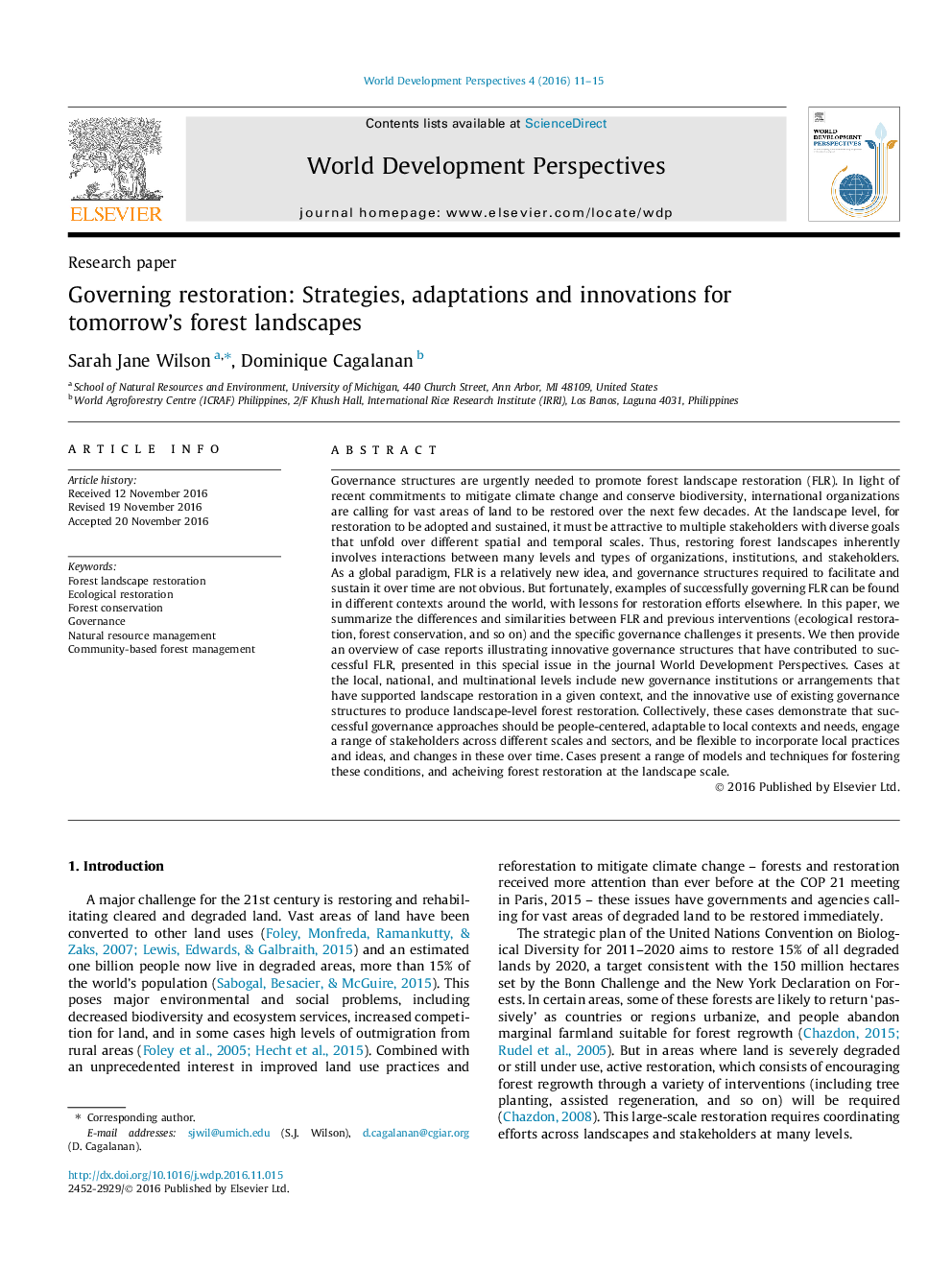| کد مقاله | کد نشریه | سال انتشار | مقاله انگلیسی | نسخه تمام متن |
|---|---|---|---|---|
| 5115264 | 1484866 | 2016 | 5 صفحه PDF | دانلود رایگان |
عنوان انگلیسی مقاله ISI
Governing restoration: Strategies, adaptations and innovations for tomorrow's forest landscapes
ترجمه فارسی عنوان
بازسازی در حال اجرا: استراتژی، سازگاری و نوآوری برای مناظر جنگل فردا
دانلود مقاله + سفارش ترجمه
دانلود مقاله ISI انگلیسی
رایگان برای ایرانیان
کلمات کلیدی
بازسازی چشم انداز جنگل، بازسازی محیطی، حفاظت از جنگل، حکومت، مدیریت منابع طبیعی، مدیریت جنگل مبتنی بر جامعه،
موضوعات مرتبط
علوم انسانی و اجتماعی
علوم اجتماعی
توسعه
چکیده انگلیسی
Governance structures are urgently needed to promote forest landscape restoration (FLR). In light of recent commitments to mitigate climate change and conserve biodiversity, international organizations are calling for vast areas of land to be restored over the next few decades. At the landscape level, for restoration to be adopted and sustained, it must be attractive to multiple stakeholders with diverse goals that unfold over different spatial and temporal scales. Thus, restoring forest landscapes inherently involves interactions between many levels and types of organizations, institutions, and stakeholders. As a global paradigm, FLR is a relatively new idea, and governance structures required to facilitate and sustain it over time are not obvious. But fortunately, examples of successfully governing FLR can be found in different contexts around the world, with lessons for restoration efforts elsewhere. In this paper, we summarize the differences and similarities between FLR and previous interventions (ecological restoration, forest conservation, and so on) and the specific governance challenges it presents. We then provide an overview of case reports illustrating innovative governance structures that have contributed to successful FLR, presented in this special issue in the journal World Development Perspectives. Cases at the local, national, and multinational levels include new governance institutions or arrangements that have supported landscape restoration in a given context, and the innovative use of existing governance structures to produce landscape-level forest restoration. Collectively, these cases demonstrate that successful governance approaches should be people-centered, adaptable to local contexts and needs, engage a range of stakeholders across different scales and sectors, and be flexible to incorporate local practices and ideas, and changes in these over time. Cases present a range of models and techniques for fostering these conditions, and acheiving forest restoration at the landscape scale.
ناشر
Database: Elsevier - ScienceDirect (ساینس دایرکت)
Journal: World Development Perspectives - Volume 4, December 2016, Pages 11-15
Journal: World Development Perspectives - Volume 4, December 2016, Pages 11-15
نویسندگان
Sarah Jane Wilson, Dominique Cagalanan,
